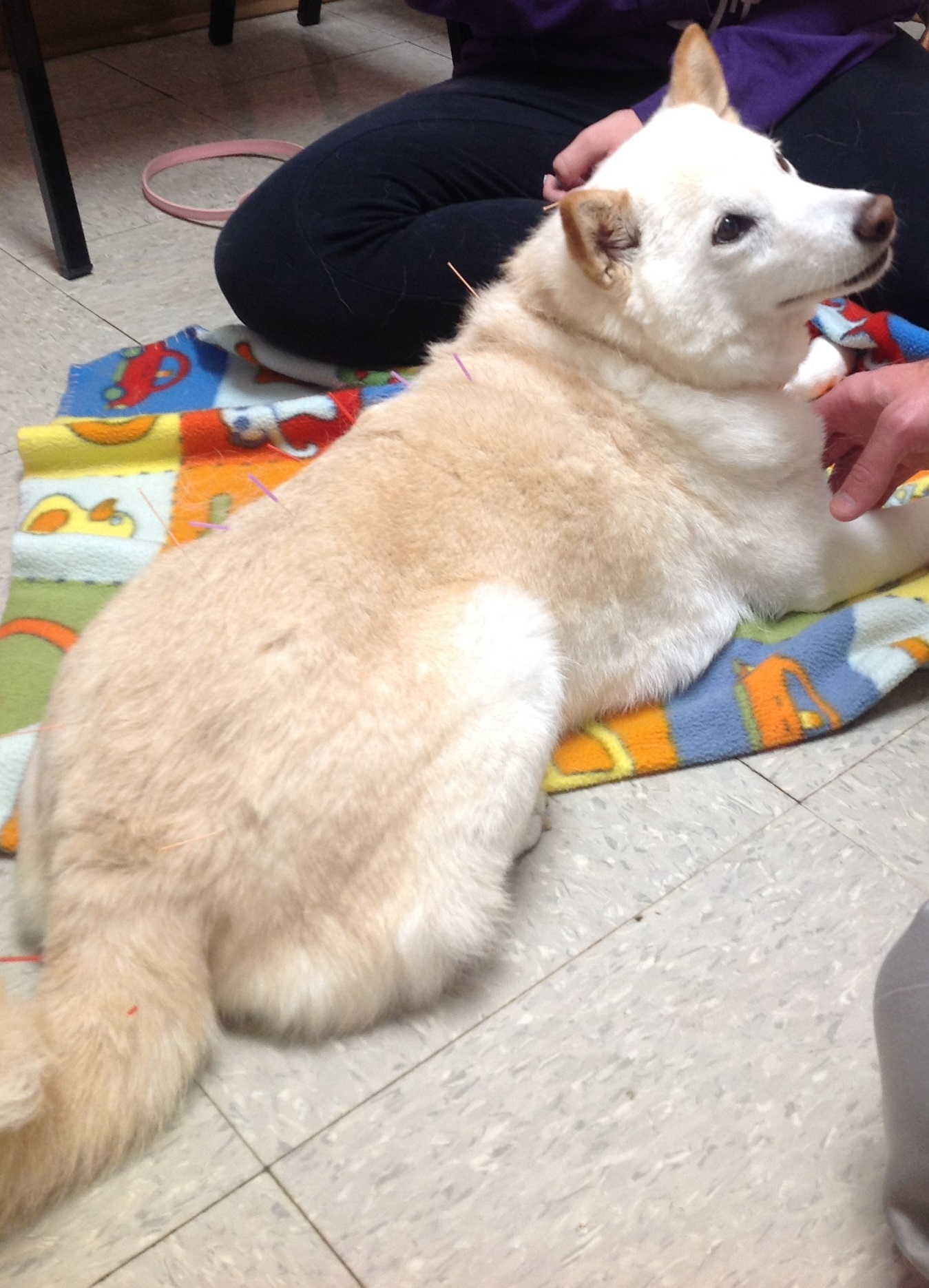
What’s best for your pet? East meets West!

The staff and veterinarians at Capitol Illini Veterinary Services in Springfield and Chatham Illinois are passionate about helping pets feel their best! We are continually searching for techniques, medicines, surgery, and other treatments that will help keep our best (furry) friends healthy with the least side effects. Sometimes that requires being on the cutting edge of the latest technology, as is the case with our autologous conditioned plasma system (ACP). ACP utilizes healing factors in a pet’s own blood, which is specially processed and then used to help regenerate damaged tissues in his or her body. On the other hand, sometimes finding the best tool for the job requires using ancient therapies that have been practiced for millennia, as is the case with acupuncture.
A brief history
There is substantial evidence dating the practice of acupuncture on humans in China up to 3000 years ago! While it is primarily thought to be a form of ‘eastern medicine,’ recent findings suggest a form of acupuncture was practiced in areas of Europe for a similar period of time. The first recordings of animal acupuncture dates to between 800-1000 years ago, although it likely was practiced before then.
What is acupuncture and how does it work?
Simply put, acupuncture is the practice of placing very thin needles into the body to provide therapeutic effects. Acupuncture points are located along channels on the surface of the body.
Many acupuncture channels and points are associated with specific nerves, blood vessels, muscles, and thick fibrous tissues called fascia. Because of an acupuncture point’s close association with a nerve, it is a powerful way to impact the body’s nervous system. The nervous system regulates all bodily functions.
Until modern times, acupuncture was a blood-letting technique, and was thought to work by moving qi (pronounced “chee”). In the pre-scientific era, this was the best understanding practitioners had of why it worked. However, we know now that acupuncture’s mechanism of action is not mysterious at all! It is a means of affecting the nervous system, musculoskeletal system, endocrine systems, and many other bodily systems.
Acupuncture is often used in conjunction with conventional testing and treatment. In contrast to many conventional treatments, acupuncture has the unique ability to work with a pet’s innate healing abilities. Rather than introducing a foreign compound (i.e. a medication), acupuncture causes the release of many helpful substances within the body to restore homeostasis or balance.
Several general effects of acupuncture include: decreased pain, increased blood circulation, better oxygenation, enhanced communication between nerves, anti-inflammatory effects, promoting calm and relaxation, improved mobility, and regulation of the immune system.
Ancient technique with solid evidence
There are bound to be folks who are a little skeptical of acupuncture. However, there is a vast and growing body of evidence showing how effective acupuncture is, as well as helping to elucidate how it works in the body. There are many medical journals dedicated solely to studying acupuncture, as well as the National Institutes of Health National Center for Complementary and Alternative Medicine, which is funded and directed by the United States Federal government.
How are the treatments performed?
Acupuncture treatments are intended to be as relaxing and stress-free as possible. We work with each individual pet’s temperament and preferences to provide the optimum treatment. Each session will include a thorough myofascial (or muscular) exam and a neurologic exam if necessary. The first session generally starts with placing a few small needles to help the pet become familiar with the treatment and give the body time to adjust. Subsequent sessions will likely involve treatments directed more at the primary problem. Some pets even get peanut butter or another favorite treat to enjoy while the needles are being placed!
Many pets will not feel the needle at all. Most treatments are started with the smallest needles possible, placed in non-painful locations. However, it is sometimes necessary to treat painful locations. If your pet does feel the needle, it means that area needed to be treated and your pet will likely feel much better after the treatment!
If you feel your pet might benefit from medical acupuncture, please contact Capitol Illini Veterinary Services to request more information. We are very happy to help!
